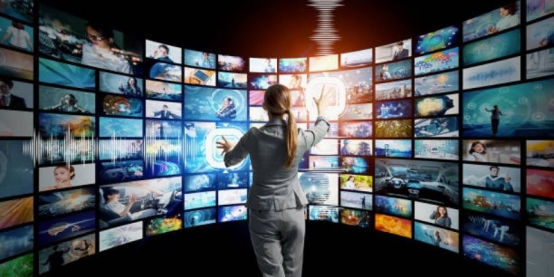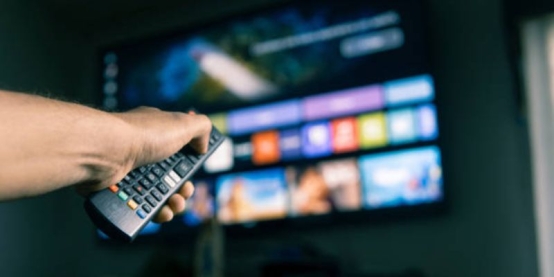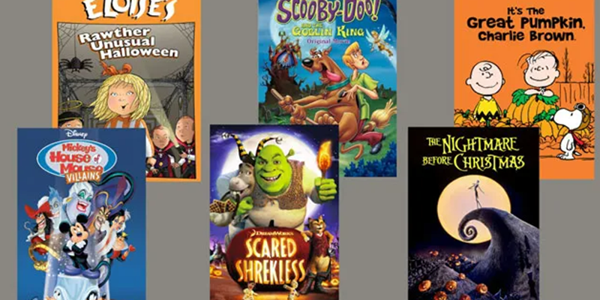Movies
The TRUTH About 4K Streaming: Which Actually Delivers Ultra HD Movies
Streaming platforms tout “4K,” “Ultra HD,” or “UHD,” but quality varies. Many claim 4K support yet deliver compressed, downgraded, or upscaled content. True 4K depends on bitrate, compression, HDR, and device limits—not just resolution.
Streaming platforms tout “4K,” “Ultra HD,” or “UHD,” but quality varies. Many claim 4K support yet deliver compressed, downgraded, or upscaled content. True 4K depends on bitrate, compression, HDR, and device limits—not just resolution.
Let's skip the marketing fluff—see what real 4K streaming really is, the hurdles, and which services truly deserve the Ultra HD label.
What Does True 4K Streaming Really Mean?
Saying a service supports 4K often refers to its resolution—3840 × 2160 pixels. But resolution alone is not enough to ensure sharp, immersive video. Several other factors shape whether the stream looks like real Ultra HD or a mediocre upscaling.

Key Technical Components That Matter
Bitrate
Bitrate is the actual amount of data used per second (e.g. megabits per second, Mbps). A high bitrate means more visual information and less compression artifacting. Two services could both stream at 3840×2160, but one at 30 Mbps and another at 8 Mbps will look very different.
Codec / Compression Efficiency
Modern codecs like HEVC (H.265), AV1, and VP9 enable better compression—delivering higher visual quality at lower bitrates. Older codecs may struggle and force more aggressive compression, leading to blockiness or softer edges.
HDR Formats
High Dynamic Range (HDR) adds deeper contrast, richer colours, and better brightness. Common HDR types include HDR10, Dolby Vision, and HLG. A 4K stream with HDR support typically looks more vibrant and lifelike than one in standard dynamic range.
Frame Rate (fps)
Many cinematic films are 24 fps, but some content (especially sports, animation, or high-motion scenes) benefits from 60 fps. Some platforms may cap 4K HDR at lower frame rates, affecting smoothness. Taken together, resolution, bitrate, codec, HDR, and frame rate shape whether a stream is truly premium 4K—or just a downgraded imitation.
4K resolution vs. 4K quality — what actually matters?
Resolution: 3840×2160 (static measure)
Quality: Bitrate + compression + HDR + frame-rate + source encoding
Minimum Internet Speed & Device Requirements for True 4K
Even if a platform can deliver real 4K, users won’t see it without meeting certain bandwidth and device constraints.
Recommended Bandwidth
Different services recommend or require different speeds. For example:
Netflix suggests 15 Mbps or higher for Ultra HD streaming.
Cloudinary’s guide places Netflix 4K around 15–25 Mbps for solid performance.
Community-driven tests find Netflix often encodes 4K HDR in the 15–20 Mbps range, while Apple TV+ averages 20–25 Mbps, with peaks exceeding 40 Mbps.
Because streaming is adaptive (meaning bitrate steps up or down based on network conditions), having a stable margin above the nominal requirement is wise.
Device & Infrastructure Constraints
Even with enough bandwidth, playback can be limited by:
Wi-Fi reliability: Older routers or weak signals will drop frames or force bitrate drops.
TV/monitor processing: Some cheaper TVs lack hardware to decode advanced codecs or HDR.
HDMI version & cable: To get full 4K HDR at 60 fps (or above), HDMI 2.0 or later (preferably HDMI 2.1) is needed.
Streaming stick/box limits: Some dongles or boxes artificially cap bitrate or lack HDR support.
Adaptive bitrate throttling by the service app: Some apps restrict maximum quality unless explicitly configured.
Quick checklist to ensure 4K is truly playing:
Verify internet speed tests consistently above ~25–30 Mbps.
Check that your device/streaming box supports HEVC, AV1, HDR, and high frame rates.
Use a certified HDMI 2.0+ cable.
In the streaming app’s settings, enable “Best Quality / Ultra HD / High” mode.
On a moment of known high detail (e.g. nature scenes), view bitrate info or diagnostic stats if the app allows it.
The Reality Check: Which Streaming Services Deliver True 4K?
Below is a breakdown of major platforms—how well they execute 4K in practice, what limitations exist, and which ones are the most trustworthy for Ultra HD purists.

Netflix
Actual 4K quality
Netflix uses "dynamic optimised" HDR streaming with variable bitrates. Typical 4K HDR titles fall between 8 Mbps and 16 Mbps, depending on scene complexity and network. Some titles push higher, but many are aggressively compressed.
Plan requirement & device support
You must be on the Premium tier to access 4K. Legacy TV devices and most newer smart TVs support Netflix 4K with HDR (Dolby Vision or HDR10, where supported).
Real-world issues
Because of aggressive adaptive encoding and network fluctuation, even in good conditions, the service may drop to lower bitrates, making artefacts visible on large TV sets.
Disney+
4K HDR support: Disney+ supports Dolby Vision and HDR10 for many titles.
Bitrates & image fidelity: Though Disney publishes fewer public bitrate numbers, third-party testers report stable quality and good HDR rendering, especially for bright scenes.
Consistency across devices: Some browsers (Chrome, Edge) limit playback to lower resolutions due to DRM constraints. On compatible smart TVs and native apps, 4K HDR is usually available.
Apple TV+ (now "Apple TV")
Premium performance: Apple TV+ is frequently cited as a benchmark for 4K streaming. Bitrate averages often fall in 20–25 Mbps, and peaks exceeding 40 Mbps have been observed on demanding scenes.
HDR & Atmos: Apple supports Dolby Vision + HDR10 and Dolby Atmos audio on compatible devices.
Device support & decoding: Contents stream at full quality on Apple devices, newer smart TVs, and certified boxes.
Amazon Prime Video
Variable quality: Some titles stream in true 4K HDR, others are upscaled or compressed heavily.
Regional & device variability: Bitrate and HDR availability may vary depending on region or device. Amazon’s adaptive bitrate approach tends to err on the conservative side, leading to visible softening on complex scenes.
Strengths & limitations: A good option for users already subscribing, but less trustworthy for hardcore 4K lovers.
Max (formerly HBO Max)
4K HDR content: Some original films and select titles are available in 4K HDR (Dolby Vision) on Max.
Quality gains over time: Since merging HBO Max with Warner Bros content, the 4K slate has improved, though not all library titles get HDR treatment.
Bitrate reliability: Bitrate and HDR consistency depend heavily on device and network; flagged by users to occasionally drop to standard quality.
Hulu, Paramount+, Peacock, and Others
4K availability: These services have limited 4K support. For example, Hulu offers 4K for selected originals, but often without HDR.
Limitations: Many platforms may deliver “technically 4K resolution,” but their bitrate and codec choices result in mediocre visual quality. In many cases, "4K" on these platforms is more marketing than substance.
Niche & Free Services
YouTube 4K: YouTube supports AV1, VP9, and HEVC for 4K streams. Quality depends on the uploader’s settings and the viewer’s device decoding capabilities. Some top-tier uploads rival paid platforms; many are heavily compressed.
Tubi, Pluto TV, etc.: Free services occasionally list 4K content, but these tend to be compressed heavily or upscaled, with minimal HDR support. For reliable Ultra HD, they’re far from ideal.
Apple TV rentals / Vudu / Kaleidescape: These services (especially for purchase/rentals or curated systems) often deliver high-bitrate 4K files with less compression, rivalling Blu-ray levels.

The Hidden Factors That Affect 4K Streaming Quality
Even with a capable service and device, several subtle forces can degrade streaming:
Compression during peak hours: During high traffic, services may reduce bandwidth available per user to balance loads, lowering bitrate.
App or device caps: Some streaming boxes or stick apps artificially limit max bitrate to avoid buffering issues on weak networks.
ISP throttling/network congestion: If your internet provider slows streaming traffic (throttling) or your network is congested with other devices, quality drops.
Upscaled vs native 4K mastering: Some “4K” titles are upscaled from 1080p sources. No matter how good the codec, upscaled content will lack detail versus native 4K masters.
Is Real 4K Worth It?
High-quality 1080p at a strong bitrate can often look very convincing—especially on smaller screens or from typical viewing distances. On a 55″ TV, differences may be subtle. On a 75″ or larger, the gaps become more obvious.
Thus, for many users, the extra cost or effort to access premium 4K may yield diminishing returns. But for cinephiles, big-screen setups, or HDR enthusiasts, real 4K can be a noticeable upgrade.
Deciding whether to upgrade depends on:
The size of your screen and your viewing distance
Whether your eyes are sensitive to fine detail
The cost to upgrade internet, app subscriptions, or devices
Whether the streaming library you care about offers consistent 4K quality
Ultimate Ranking: Which Streaming Services Deliver Ultra HD Best?
Here’s a practical ranking based on authenticity, consistency, and value to 4K lovers:
Best Overall – Apple TV+
Apple TV+ delivers the most authentic 4K streaming experience overall. Its videos have strong average bitrates, consistent HDR performance, and very polished apps across devices. Apple maintains excellent quality control, so 4K content almost always looks genuinely sharp and detailed.
Best Library + 4K – Disney+
Disney+ combines an extensive content library with good 4K HDR support. Most major titles, including Marvel and Pixar films, stream in real 4K with vibrant colour and solid contrast. The average quality is below Apple's, but it still offers a great mix of quantity and clarity for 4K fans.
Mixed but Viable – Amazon Prime Video
Amazon Prime Video offers a wide range of 4K titles, but the quality can be inconsistent. Some shows and movies deliver true 4K clarity, while others look softer due to compression or lower bitrates. Still, it’s a decent option if you already have a Prime subscription.
Overhyped / Inconsistent – Netflix
Netflix promotes its 4K plans heavily, but the results depend on both your subscription tier and the specific title. Some content looks excellent, yet others suffer from aggressive compression that reduces sharpness and colour depth. It's convenient, but not always the most authentic 4K experience.
Limited 4K Claims – Hulu, Paramount+, Peacock
These platforms technically offer 4K streaming, but in practice, much of it is either shallow in detail or upscaled from HD. They're fine for casual viewing, but true 4K enthusiasts will notice the difference right away.
Free / Niche – YouTube, Tubi, Pluto TV
Among free streaming options, YouTube stands out for actually providing real 4K playback on many videos. However, most other free services like Tubi and Pluto TV rarely deliver genuine 4K quality, often relying on lower resolutions or upscaled sources.
Tips to Get the Best 4K Experience at Home
To squeeze the best from whatever service is used:
In streaming settings, force “Highest / Best / 4K / HDR” mode
Use wired Ethernet or a reliable Wi-Fi 6 router
Turn off TV energy-saving features (they can dim HDR)
Ensure all HDMI cables are version 2.0 or better and HDR-certified
Update firmware on TV and streaming boxes—some updates enable better HDR or codec support
Temporarily monitor the instantaneous bitrate during playback to check if the stream is reaching high-end levels.
Sources
TV Shows
13 Best Feel-Good TV Shows For Stressful Days
September 7, 2025
Movies
The Perfect Gift For Cinephiles: Where To Buy The Best Movie Gift Cards
August 12, 2025
Celebrity
A Plastic Surgeon Exposes The Truth About Celebrity Procedures
August 21, 2025
Outfit Ideas
Cute And Funny Family Halloween Costumes For Families Of 3–6
August 23, 2025
Movies
12 Classic Halloween Movies That Never Get Old
September 6, 2025
Celebrity
This Is How Much Your Favorite Celebrity Is Really Worth In 2025
August 19, 2025

TV Shows
The Best Office Laughs: Workplace Comedies You Can’t Miss
August 26, 2025

TV Shows
Laugh Out Loud: TV Shows With The Funniest Ensemble Casts
August 26, 2025

TV Shows
What Are The Best TV Shows To Watch With Tweens
September 5, 2025

Celebrity
The Highest-Paid Female Actors Of 2025 (Earnings Revealed)
August 25, 2025

Movies
Best Halloween Movies For Kids & Families: Fun, Cute, And Not Too Scary
August 12, 2025

TV Shows
20+ TV Shows That Make You Laugh and Cry
September 12, 2025